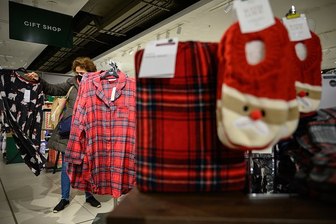Millennials have defined trends within the coffee sector for several years but the influence of Gen Z on coffee culture is trending, particularly in the UK.
When asked whether there’s no such thing as too much coffee, three in ten Brits agreed, while 16% are undecided. But what’s the picture like between the generations?
Gen Z has the highest share of consumers who disagree with the statement (61%) with only 26% in agreement and 13% of consumers on the fence. Millennials and Gen X-ers, on the other hand, seem to have the highest share of coffee enthusiasts as 32% of them don’t think there’s such a thing as too much joe. While the Silent Generation has the lowest share of consumers in agreement (22%), the proportion of those who neither agree nor disagree is the highest among this generation (20%). Gen Zs are amongst the least likely to agree that there is no such thing as too much coffee – and the least likely among the youngest three generations. Does that mean the coffee love-in is dying?
Where do coffee drinkers get their fix?
Further analysis shows that Brits do most of their drinking at home or work, with a majority drinking coffee there at least once a day.
But slightly less than half (46%) of Gen Z say they never drink coffee at work or home, with only a minority (10%) drinking multiple times a day – the lowest of all our groups. The share of those who never drink at work/home steadily reduces as we move towards the older generations. Gen Zs are the most likely to tell us that they drink coffee at home or at work less than once a week.
Although the Silent Generation had the lowest share of consumers who agreed with the previous statement, the share of those who drink coffee multiple times a day shows that they are far from sworn off the caffeine (50% do so, equal to Baby Boomers).
When you look at the number of times Brits drink at cafes, the data reveals that it is a much less common habit – and something which consumers tend to treat themselves to much less often. Around half of Brits never do it, while the most common answer is less often than once a week.
Again, Gen Zs are less likely to drink coffee this way. The total proportion of Gen Zs that either drink coffee less often than once a week or never drink (11% and 46% at home, 33% and 52% at cafés, respectively) outweighs the proportion that do drink more than once a week. That’s consistent with our data that Gen Z members are doing without coffee in their daily routine.
What motivates consumers to drink coffee?
Among those who drink coffee, taste, strength, type of coffee and price seem to be the top four factors for the older generations when buying coffee. However, while taste and price are also at the top of Gen Z’s motivation, the next most important factor is convenience (20%). This could probably be the reason why a higher share of Gen Z bought ready to drink coffee (16%) in the last three months.
How to connect with Gen Z
In order to reach and engage with Gen Z, YouGov data unsurprisingly reveals that social media is one of the best mediums advertisers should focus on. Almost two in five Gen Z-ers say they don’t trust adverts on TV, while 51% say they are more likely to engage with advertisements on social media than on regular websites.
Gen Z is also more likely to be influenced by ads they see - 46% agree that advertising helps them choose what they buy, compared to 19% of Baby Boomers and 17% of the Silent Generation. They are also more likely to engage with adverts that are tailored to them (42%).
Find out more about coffee drinking habits among the Gen Z audience in the US
Receive monthly topical insights about the FMCG/CPG industry, straight to your inbox. Sign up today.
Discover more FMCG content here
Want to run your own research? Start building a survey now
Methodology: YouGov Profiles is based on continuously collected data and rolling surveys, rather than from a single limited questionnaire. Profiles data is nationally representative and weighted by age, gender, education, region, and race. Learn more about Profiles.










